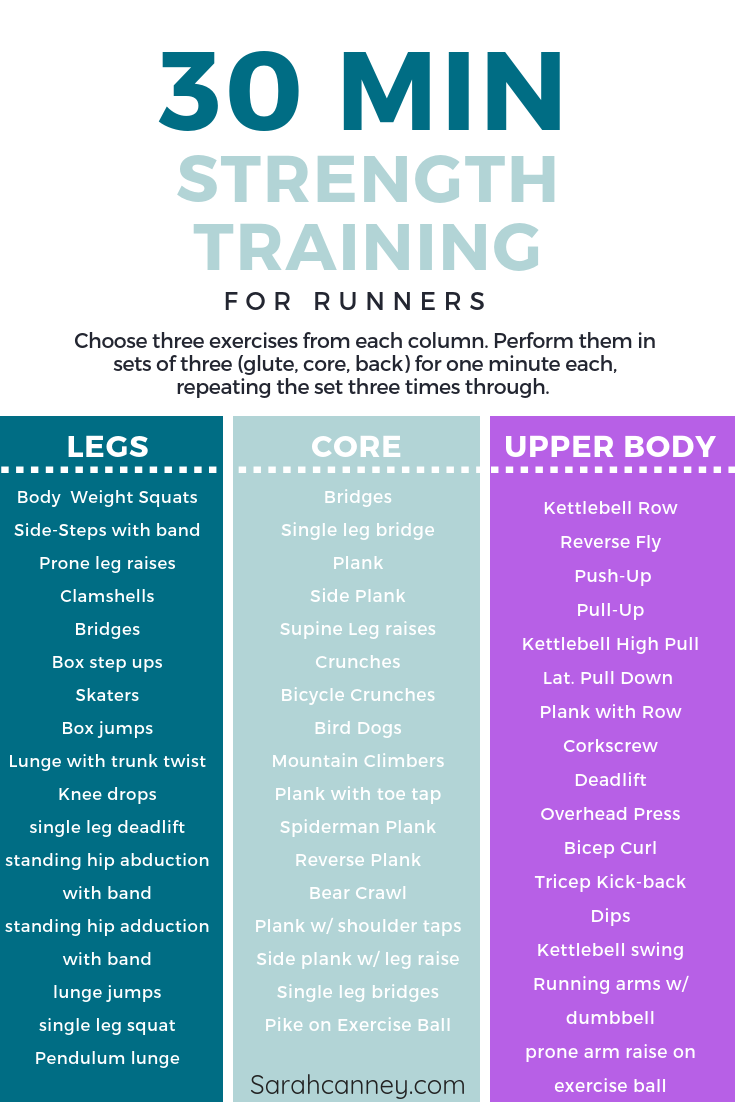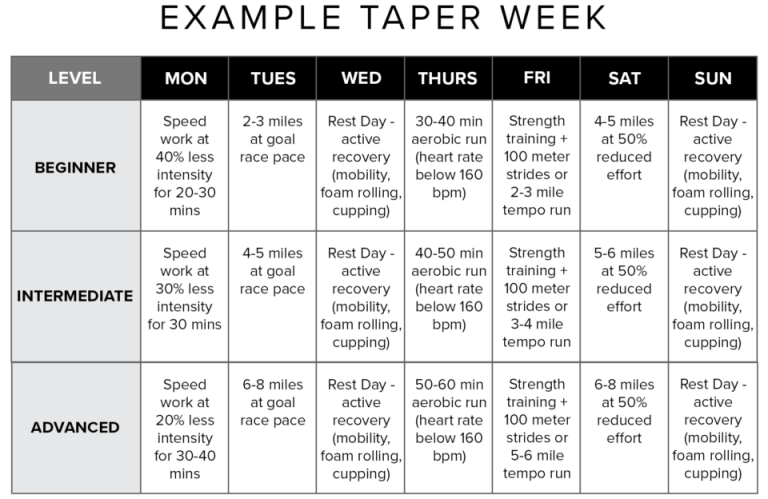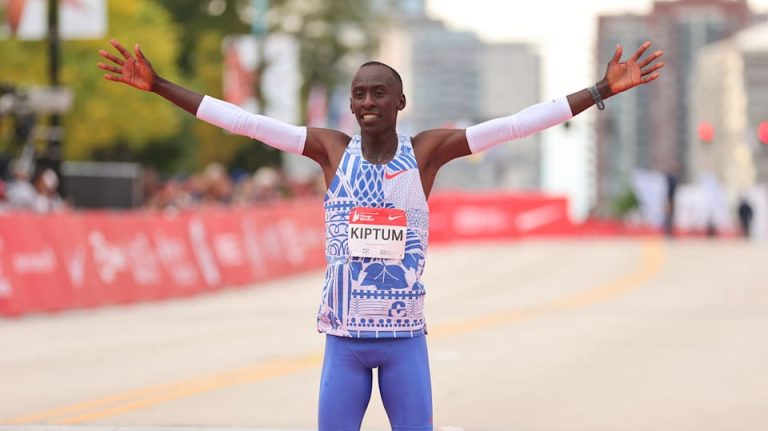Best Strength Moves For Runners
To boost strength for running, incorporate moves like squats, lunges, planks, and deadlifts in your routine. Strengthening exercises enhance running performance and prevent injuries.
As a runner, focusing on building strength in key muscle groups through targeted moves can improve speed, endurance, and overall performance. By including these exercises in your training regimen, you can enhance your running efficiency and reduce the risk of common injuries.
Regularly practicing strength moves will not only benefit your running abilities but also contribute to your overall fitness and health. Incorporating these exercises can help you become a stronger and more resilient runner, allowing you to reach new levels of performance.

Credit: www.runnersworld.com
Benefits Of Strength Training For Runners
Strength training is a crucial component of a runner’s workout regimen, offering a plethora of benefits to enhance performance and prevent injuries. Incorporating strength exercises into a running routine can have a profound impact on a runner’s overall athleticism and endurance.
Improved Running Economy
Strength training enhances a runner’s biomechanics by improving running economy. It helps in maintaining proper form and posture, leading to better efficiency and reduced energy expenditure. This enables runners to cover longer distances while expending less energy, ultimately improving their endurance. By targeting specific muscle groups, strength training aids in reinforcing proper running mechanics, reducing the risk of overuse injuries.
Increased Power And Speed
Engaging in strength exercises, such as squats, lunges, and plyometrics, contributes to enhanced power and speed. These exercises focus on developing explosive strength and increasing muscle power, enabling runners to generate more force with each stride. As a result, runners experience improved acceleration and higher running speeds, which can be particularly beneficial in sprinting and race scenarios.

Credit: sarahcanney.com
Key Considerations For Strength Training
Key Considerations for Strength Training:
Muscle Imbalances
Addressing muscle imbalances is crucial for runners to prevent injuries and improve performance.
Specificity Of Exercises
Choosing exercises that mimic running movements helps runners build functional strength.
Top Lower Body Strength Exercises
Discover the top lower body strength exercises that can enhance your running performance. Incorporating these exercises into your workout routine can help you develop the necessary strength and power to improve your speed and endurance as a runner.
Squats
Performing squats engages various muscle groups in your lower body, including your quadriceps, hamstrings, and glutes. This exercise helps to build leg strength and stability, which are essential for runners to maintain proper form and prevent injuries.
Lunges
Lunges are effective for targeting individual leg muscles and improving balance and coordination. They also help to strengthen your hip flexors and glutes, which are crucial for powering through runs and maintaining a strong stride.
Effective Upper Body Strength Exercises
Engaging in effective upper body strength exercises is crucial for runners as it can enhance overall performance and reduce the risk of injuries. Incorporating moves that target the upper body not only helps maintain proper running form but also improves endurance and power. To maximize the benefits, it’s essential to include exercises such as push-ups and planks as part of a well-rounded strength training routine.
Push-ups
Push-ups are a fundamental upper body exercise that engages the chest, shoulders, triceps, and core muscles. Performing push-ups regularly can help runners develop upper body strength, which is essential for maintaining stability and proper posture during running. By including push-ups in the workout routine, runners can improve overall upper body endurance and contribute to enhanced running performance.
Planks
Engaging in planks is an effective way for runners to strengthen the core, shoulders, and arms. This exercise helps improve stability and endurance, which are crucial for maintaining proper running form and preventing fatigue. By incorporating planks into the strength training regimen, runners can enhance their overall upper body strength and minimize the risk of injuries associated with weak stabilizing muscles.
Full-body Functional Strength Exercises
HTML format suitable for WordPress:When it comes to improving performance and preventing injuries, incorporating full-body functional strength exercises into your training routine is essential for runners. These exercises help increase overall body strength, improve stability, and enhance running efficiency.
Deadlifts
Deadlifts are a powerhouse exercise that targets multiple muscle groups, making them highly effective for improving strength and power in runners. Performing deadlifts requires maintaining proper form and engaging the core, glutes, hamstrings, and lower back.
Here’s how to perform a deadlift:
- Start with your feet hip-width apart and the barbell on the ground in front of you.
- Bend your knees and hinge at the hips, keeping your back straight and chest lifted.
- Grip the barbell with an overhand grip, slightly wider than shoulder-width apart.
- Engage your core and glutes as you lift the barbell off the ground by extending your hips and knees.
- Pause at the top for a second, then lower the barbell back down to the starting position.
Make sure to start with lighter weights and gradually increase the load as you become comfortable with the movement. Deadlifts not only strengthen the posterior chain muscles but also help improve running form and stability.
Burpees
Burpees are an intense full-body exercise that targets multiple muscle groups, including the core, upper body, and lower body. They are great for boosting conditioning, strength, and explosiveness, making them ideal for runners.
Here’s how to perform a burpee:
- Start in a standing position with your feet shoulder-width apart.
- Lower yourself into a squat position, placing your hands on the ground in front of you.
- Jump your feet back, landing in a plank position with your arms fully extended.
- Perform a push-up by bending your elbows and lowering your chest to the ground.
- Push yourself back up to the plank position and quickly jump your feet back to the squat position.
- Explosively jump into the air, raising your arms overhead.
- Land softly back into the squat position and repeat the movement.
Burpees are a fantastic exercise to incorporate into your training as they build strength, endurance, and cardiovascular fitness. Including them in your routine can help improve your running performance and overall fitness level.

Credit: www.pinterest.com
Frequently Asked Questions For Best Strength Moves For Runners
What Are The Best Strength Moves For Runners?
Some of the best strength moves for runners include squats, lunges, and planks. These exercises help improve stability, power, and overall running performance.
How Often Should Runners Do Strength Exercises?
Runners should aim to do strength exercises at least 2-3 times a week to see results. It’s important to give your muscles time to recover between sessions.
Can Strength Training Help Prevent Running Injuries?
Yes, strength training can help prevent running injuries by strengthening the muscles and improving form and stability. It also helps to correct imbalances and promote overall body strength and endurance.
Conclusion
Incorporating these recommended strength moves into your training routine can help enhance your running performance and reduce the risk of injury. By focusing on areas like core strength, balance, and flexibility, you can become a stronger and more efficient runner.
Consistency and proper form are key to reaping the benefits of these exercises. Keep pushing forward with determination and watch as your running abilities progress.







